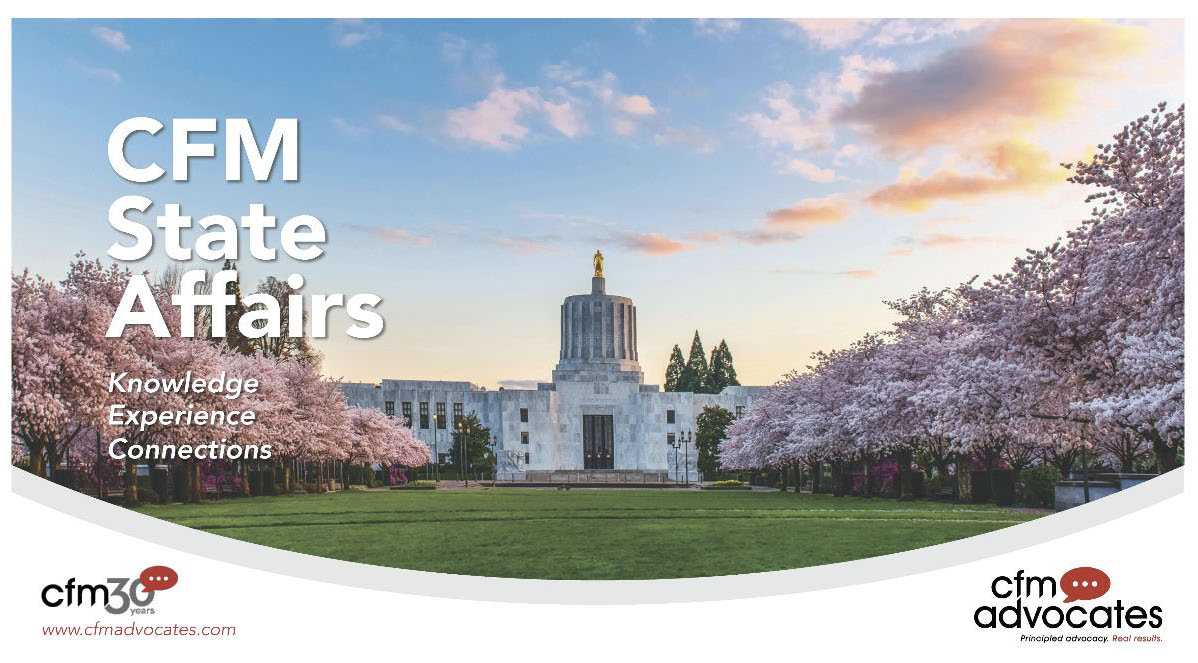
Kotek Calls for School Mental Health Action Plan and Transparent Budget Data
Following the tentative settlement between teachers and Portland Public Schools, Governor Kotek on Tuesday called for a statewide action plan to address the “social-emotional health needs of students” and voiced support for a legislative task force to review school funding and teacher salaries.
Kotek also indicated she will create an Office of Transparency within the Oregon Department of Education “to make budget information the state already collects from school districts more accessible and easier to understand”. A major issue in the month-long Portland teacher strike was a disagreement over how much revenue the school district had available.
 “As your Governor and the Superintendent of Public Instruction, I commit to partnering with educators across the state to tackle the systemic issues that contributed to this strike,” Kotek said in a statement. “We all have an opportunity to do our part to ensure our schools are safe, successful places for students, teachers and school employees.”
“As your Governor and the Superintendent of Public Instruction, I commit to partnering with educators across the state to tackle the systemic issues that contributed to this strike,” Kotek said in a statement. “We all have an opportunity to do our part to ensure our schools are safe, successful places for students, teachers and school employees.”
“The strike was a reflection of larger challenges that districts across the state are facing,” Kotek said. “From salaries not staying competitive with the market, to backlogs in facility maintenance, to classroom disruptions related to the behavioral health needs of students, we clearly have work to do.”
Portland teachers went on strike November 1 seeking higher cost-of-living increases, class size caps, more planning time and stricter student discipline.
Salem-Keizer Public Schools has requested state mediation in its bargaining with teachers and classified employees. District officials say they are starting with a structural deficit that will require significant spending cuts. Seventy Oregon school districts will engage in collective bargaining for contracts that expire in 2024.
In a news release, Kotek said she want to “partner with the legislature to establish minimum teacher salaries and review funding for schools”. On teacher salaries, she “wants to see a proposal for minimum teacher salary schedules that make Oregon competitive with our neighboring states, mitigate competition between neighboring districts and reflect local cost of living. She also wants to see a plan to fund that proposal over the next several years.”
On overall school funding, the release said, “While the legislature ultimately adopts the budget, the Governor’s office must be a partner to ensure the methodology makes sense for today’s realities. The Governor will direct the Chief Financial Officer and the Oregon Department of Education to partner with the legislature and education stakeholders to review and revise the methodology for school funding.”
“The Portland teacher strike exposed the illusion of local control in our K-12 system.”
 Nesbitt Lessons Learned Commentary
Nesbitt Lessons Learned Commentary
A commentary by Tim Nesbitt, former president of the Oregon AFL-CIO, also was posted Tuesday that called for greater state involvement over public school budgeting and bargaining.
“The Portland teachers strike,” he wrote, “sent a message to state lawmakers who hold the purse strings for Portland and the state’s other 196 school districts: You can’t keep writing checks for our schools without getting more involved in how those checks are spent.”
“The Portland strike exposed the illusion of local control in our K-12 system,” Nesbitt added. “And it has set the stage for a reckoning with the dysfunction that results from the split-level governance of our schools in budgeting, bargaining and managing for results in our kids’ classrooms.”
Nesbitt noted other states have turned to statewide teacher bargaining and clearly identify in school funding legislation how much is intended to go to teacher salaries.
The Portland teachers strike turned on other issues such as class size and working conditions. “Class size can be cast as an issue of working conditions,” he said. “But it rests on staffing levels, which can only be determined in an overall budget with agreed-upon labor costs. That’s the chicken-and-egg problem with budgeting and bargaining.“
Nesbitt recommended restoring fact-finding to bargaining, which was eliminated in Oregon in 1990. “As local unions press for more say in budgeting, they are going to have to deal with the full financial impacts of their demands, including the total compensation costs that affect staffing levels and the downstream impact of big-ticket items like retirement benefits.”
 “Both unions and school boards will need to dig into a district’s spreadsheets to establish a shared reality for short-term budgeting and far-sighted decision-making,” he explained. “Fact finding can help in this process; restoring it as a touchstone in public sector bargaining ought to be one of lawmakers’ first responses to the Portland experience.”
“Both unions and school boards will need to dig into a district’s spreadsheets to establish a shared reality for short-term budgeting and far-sighted decision-making,” he explained. “Fact finding can help in this process; restoring it as a touchstone in public sector bargaining ought to be one of lawmakers’ first responses to the Portland experience.”
Internal PAT Disagreement
The Oregonian reported Tuesday that Steve Lancaster, longtime head of Portland Association of Teachers’ bargaining unit had resigned in an apparent disagreement with PAT’s leadership. He was quoted as saying, “In my opinion, the compromised democratic processes of the union have contributed to an unnecessarily long strike for the gains achieved.”
The story also quoted an internal comment by Bill Wilson, a high school chemistry teacher who chaired the union bargaining team in 2014, who provided a blunter assessment: “The revelation last week that 13 percent was the best we could get was nothing short of stunning. It points to a failure of PAT leadership to accurately know district finances. To simply state that the money was there well into the strike without having done the work is a purposeful gaslighting of members.”
Both Lancaster and Wilson encouraged union members to ratify the agreement in voting on Tuesday. The Portland School Board was scheduled to vote on the three-year contract at its Tuesday night meeting.
 Learning Loss Toll
Learning Loss Toll
The elephant in the room for a teachers strike are students sitting at home instead of in classrooms, which can exacerbate the learning loss and increased chronic absenteeism generated by pandemic school closures.
A New York Times editorial called the school closures affecting 50 million students the greatest disruption in the history of American education.
While Portland students missed only 11 scheduled school days, they were away from their schools nearly the entire month of November, with limited access to mental health and special education specialists and no online lessons.




